Are you having trouble telling nits from dandruff? You’re not alone. About 50% of adults deal with dandruff, and 6-12 million people in the U.S. get head lice each year. Knowing how to tell nits from dandruff is key to treating them right.
Nits and dandruff have different causes, symptoms, and treatments. Understanding these differences is vital for effective care.
Key Takeaways
- Understanding the differences between nits and dandruff is key to effective treatment.
- Dandruff is a skin condition that causes flaking on the scalp, affecting about 50% of adults.
- Head lice are most common in kids, with 6-12 million cases in the U.S. each year.
- Knowing how to tell nits from dandruff is important for preventing lice spread and managing dandruff.
- Treatment options vary, with dandruff treated with anti-dandruff shampoos and lice treated with medicated shampoo.
- Preventing head lice and managing dandruff requires a thorough approach, including regular washing and checking for lice.
Understanding the Basic Differences Between Nits and Dandruff
To distinguish nits from dandruff, it’s key to know their looks and where they are on the scalp. Nits are small, teardrop-shaped eggs stuck to the hair shaft, near the scalp. Dandruff, on the other hand, is a skin issue with white or yellow flakes on the scalp.
When trying to tell nits apart from dandruff, look at these points:
- Nits stick to the hair shaft, while dandruff flakes fall off easily.
- Nits are found on the hair shaft near the scalp, while dandruff flakes are on the scalp itself.
- Nits are smaller than dandruff flakes and have a uniform shape.
Knowing how to differentiate between nits and dandruff is vital for correct treatment. For more on scalp health, check out this website. It talks about the role of nail care and nutrition.
Understanding the differences between nits and dandruff is a big step towards treating and preventing them. Always see a healthcare professional if you’re not sure about diagnosis or treatment.
| Characteristic | Nits | Dandruff |
|---|---|---|
| Appearance | Small, teardrop-shaped eggs | White or yellow flakes |
| Location | Attached to the hair shaft, close to the scalp | On the scalp itself |
| Size | Usually smaller than dandruff flakes | Variable size |
Visual Signs: How to Tell the Difference Between Nits and Dandruff
When comparing nits and dandruff, look closely at the hair and scalp. Use a magnifying glass or nit comb to spot tiny eggs or flakes. Nits stick to the hair shaft, while dandruff flakes fall on the scalp or in the hair.
The size and shape of eggs or flakes are key in nits and dandruff contrast. Nits are oval and 0.8 mm long. Dandruff flakes are bigger and more irregular. These visual signs help you tell the difference.
Here are some key points to consider when examining your hair and scalp:
- Nits are usually yellow or brown in color
- Dandruff flakes are white or grayish in color
- Nits are attached to the hair shaft, while dandruff flakes are loose
- Nits are typically found close to the scalp, while dandruff flakes can be seen throughout the hair
By carefully examining your hair and scalp, you can start to identify the visual signs of nits and dandruff. Remember to use a magnifying glass or nit comb to help you see the tiny eggs or flakes. Look for the characteristic features of each condition.
| Condition | Appearance | Location |
|---|---|---|
| Nits | Oval, 0.8 mm long | Attached to hair shaft, close to scalp |
| Dandruff | White or grayish flakes | Loose, throughout hair |
Common Misconceptions About Nits and Dandruff
Many people struggle to tell nits from dandruff. A common myth is that nits mean someone is not clean. But, head lice can happen to anyone, clean or not. Knowing the difference is key.
Some myths say head lice and nits spread easily. But, they mostly spread through direct contact. Dandruff, often thought contagious, is actually a skin condition. For more info, check out this website.
Here are some common misconceptions about nits and dandruff:
- Nits are a sign of poor hygiene
- Dandruff is contagious
- Head lice can be spread through sharing personal items
It’s important to know the truth about nits and dandruff. By understanding the difference, you can treat and prevent these issues.
Knowing the difference between nits and dandruff helps you take care of your scalp. It’s vital to get the right treatment for your condition.
| Condition | Symptoms | Treatment |
|---|---|---|
| Nits | Itching, crawling sensation | Medicated shampoos, combing |
| Dandruff | Flakes, itching | Medicated shampoos, regular shampooing |
The Science Behind Both Conditions

Understanding the science behind identifying nits versus dandruff is key. Head lice go through three stages: eggs hatch in 6 to 9 days, nymphs mature in 9 to 12 days, and adult lice live for 3 to 4 weeks. Dandruff, on the other hand, is a noninflammatory skin condition caused by the Malassezia globosa microbe. For more on the differences, check out this resource.
To distinguish nits from dandruff, knowing about the Malassezia globosa microbe is important. This microbe feeds on scalp oils, causing skin flaking. Head lice, being parasitic insects, spread through close contact. Female lice lay 6 to 10 eggs daily, which hatch into nymphs and become adult lice.
When identifying nits versus dandruff, consider these factors:
- The presence of eggs or nits in the hair, which cannot be easily brushed out
- The appearance of off-white or yellow flakes mixed with hair or falling onto the neck and shoulders
- The level of itching or discomfort experienced, which can vary depending on the condition
Understanding the science behind both conditions helps you distinguish nits from dandruff and find the right treatment. Whether it’s head lice or dandruff, taking care of your scalp is vital. This approach helps prevent future problems.
Proper Examination Techniques for Identification
To tell nits apart from dandruff, you need the right tools. A magnifying glass or a special comb is best. Wash your hair first, then use these tools to check your scalp, focusing on the back of your ears and neck.
When checking for nits or dandruff, look for teardrop eggs stuck to your hair. Dandruff flakes are not as uniform. Here’s how to inspect:
- Use a fine-tooth comb or a special lice comb to remove tangles and knots.
- Inspect your scalp, focusing on the back of your ears and neck, for signs of nits or lice.
- Look for teardrop-shaped eggs that are firmly attached to the hair shaft.
By following these steps and using the right tools, you can tell nits from dandruff. If you’re not sure, or if the problem doesn’t go away, get professional help.
| Condition | Appearance | Location |
|---|---|---|
| Nits | Teardrop-shaped eggs | Firmly attached to hair shaft |
| Dandruff | Irregular flakes | Scalp, behind ears and nape of neck |
Treatment Options and Solutions

When comparing nits and dandruff, it’s key to know the treatment options for each. Dandruff can be treated with over-the-counter shampoos and home remedies. But, nits and head lice need specific treatments. The nits and dandruff contrast in treatment is big, as nits resist many over-the-counter meds.
For head lice, using fine-tooth combs to remove nits and lice is important. This can take a lot of time, needing daily combing of 30 minutes to an hour for days. Sometimes, prescription meds are needed to kill both nits and adult lice. The AirAllé device, made by Lice Clinics of America, is a proven treatment that kills live lice and over 99% of lice eggs in one session.
For dandruff, treatment usually involves medicated shampoos and keeping the scalp clean. Sometimes, antifungal meds are given for fungal infections. It’s important to note the difference in treatment options between nits and dandruff. Here’s a table showing some key differences:
| Treatment Option | Nits and Head Lice | Dandruff |
|---|---|---|
| Over-the-counter medications | Limited effectiveness against nits | Medicated shampoos available |
| Prescription medications | Available for severe infestations | Antifungal medications may be prescribed |
| Home remedies | Fine-tooth combing, mayonnaise treatments | Coconut oil, tea tree oil |
Understanding the nits and dandruff contrast is key to choosing the right treatment. By comparing nits and dandruff, people can make better choices. This helps in achieving a healthy, lice-free scalp.
Prevention Strategies for Both Conditions
To stop head lice and nits, knowing the nits vs dandruff comparison is key. Regular combing and checking for nits can spot infestations early. Also, washing clothes and bed linens in hot water can kill lice and stop them from spreading.
To avoid dandruff, use medicated shampoos with zinc pyrithione or salicylic acid. Keeping your scalp healthy by washing regularly and avoiding harsh chemicals also helps. For more on scalp care, check out rdabeautysupply.net for treatments and products.
- Regularly checking for nits and lice
- Washing clothing and bed linens in hot water
- Using medicated shampoos for dandruff management
- Maintaining good scalp health through regular washing and avoiding harsh chemicals
By following these steps and understanding the nits vs dandruff comparison and how to tell difference between nits and dandruff, you can lower the risk of infestation. This promotes healthy hair and scalp habits.
Conclusion: Taking Control of Your Scalp Health
Learning to tell nits from dandruff is key to treating your scalp right. Knowing the differences helps you keep your scalp healthy and itch-free.
If you’re not sure what’s causing your scalp problems, see a dermatologist. They can figure out what’s wrong and suggest the best treatment options for you. This way, you can take control of your scalp health and feel better about yourself.
By focusing on scalp care and watching for signs of nits or dandruff, you can stop these issues from getting in the way. Remember this advice and get help if you need it. Your scalp needs the best care.


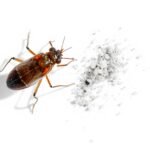
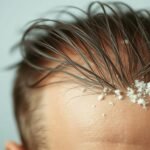
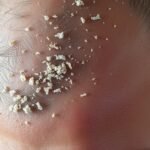
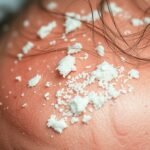
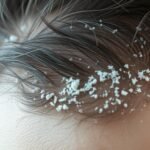
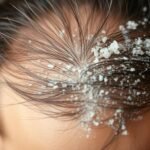
Interesting article, but isnt it more vital to discuss prevention rather than distinguishing between nits and dandruff? Just a thought.
Honestly, why not just shave it all off? No hair, no nits or dandruff. Problem solved, right? 😉
Sure, and why not just stop eating to avoid cavities? Problem solved, right? 😉
Interesting read, but arent we over-complicating things? Couldnt we just shave it all off and sidestep the nit vs dandruff debate? 😂🤷♂️
Interesting read, but arent we just over-complicating things? Isnt it simpler to just shampoo regularly and maintain good hair hygiene? Just a thought.
Honestly, does anyone else think that this nit and dandruff distinction is a ploy by shampoo companies to sell more products? Just a thought!
Interesting read, but honestly, arent there more pressing health issues to discuss than nits and dandruff? Lets keep perspective, folks.
Interesting read, but arent we just over-complicating things? Isnt it easier to just wash our hair regularly and maintain good hygiene?
Interesting article, but dont you think focusing on nits vs. dandruff distracts from the real issue – poor scalp health? Lets discuss that instead.
Interesting article, but honestly, why not just shave it all off? Solves all nit and dandruff problems at once. Just saying.
Interesting read, but honestly, why not shave it all off and skip all the nit-picking and flake-freaking? Problem solved, right?
Great read, but isnt it easier to shave it all off? Why struggle to distinguish nits from dandruff? Just my two cents. 😜
I appreciate the info, but seriously, is it even worth distinguishing? Just wash your hair regularly and avoid both nits and dandruff!
I get the differences, but seriously, why not just shave it off and avoid the nit vs. dandruff debate entirely? Problem solved.
Maybe because not everyone likes to look like a billiard ball, ever thought of that?
Interesting read, but why the Nit vs Dandruff debate? Isnt it more about proper scalp care than identifying which is which? Just a thought.
While this article was enlightening, why are we so obsessed with nits vs dandruff? Isn’t it all just flakes from our scalp? Thoughts?
Interesting read, but ever wonder if its all just a ploy by shampoo companies to sell us more products? Just food for thought.
Interesting read, but isnt it easier to just shave your head and avoid both nits and dandruff altogether? Just a thought.
The article was informative, but why are we not discussing the psychological impact of dandruff vs nits stigma? Lets address the real issues here.
Interesting point, but isnt the psychological impact subjective? Lets stick to the concrete facts.
This article is eye-opening! But seriously, isnt it just easier to shave your head and avoid all this nit vs dandruff confusion?